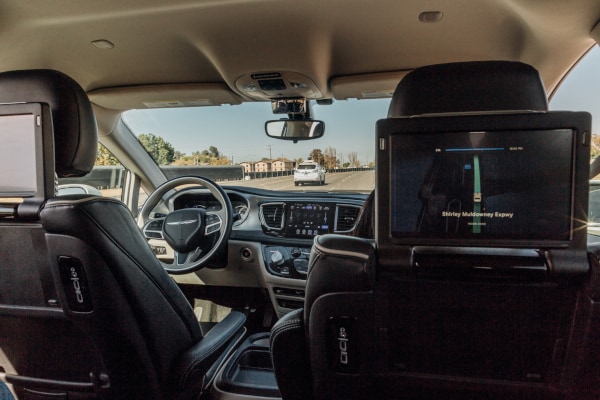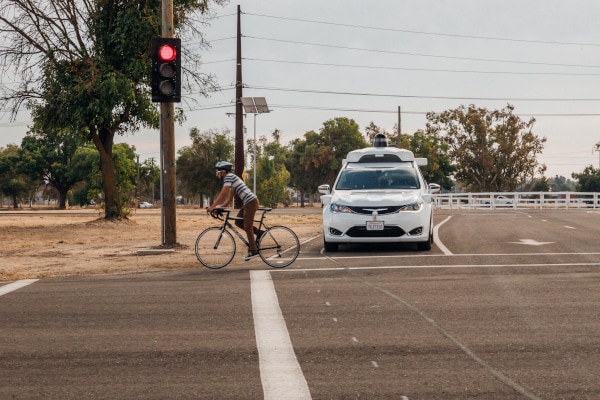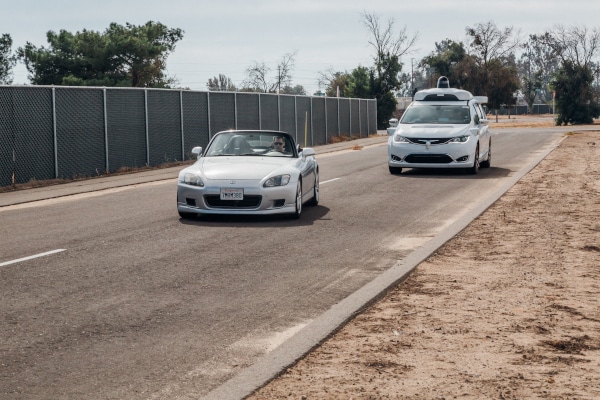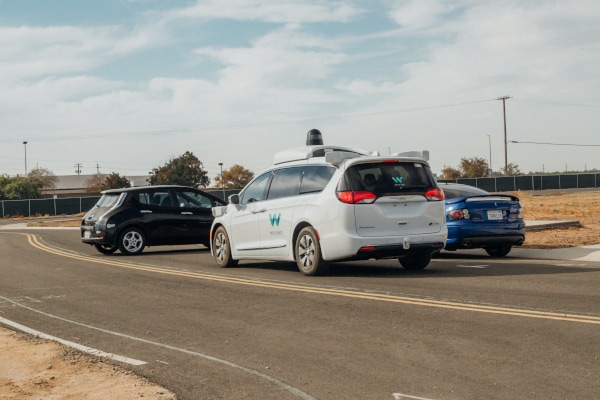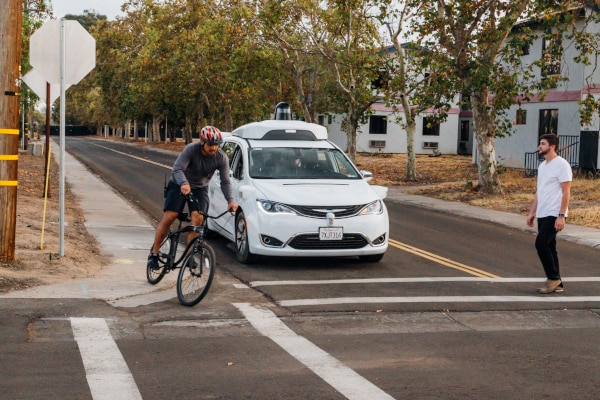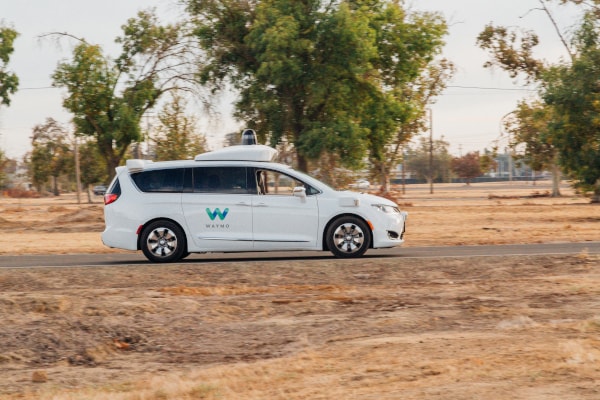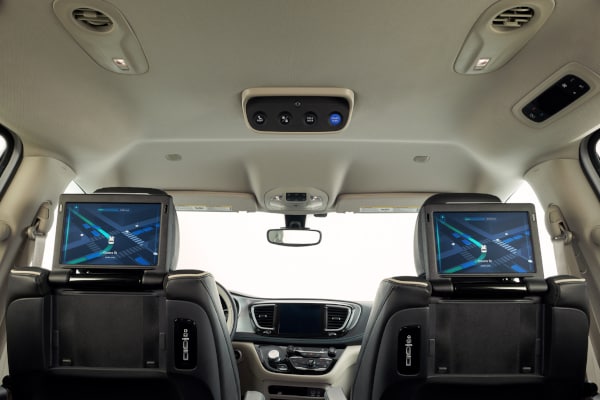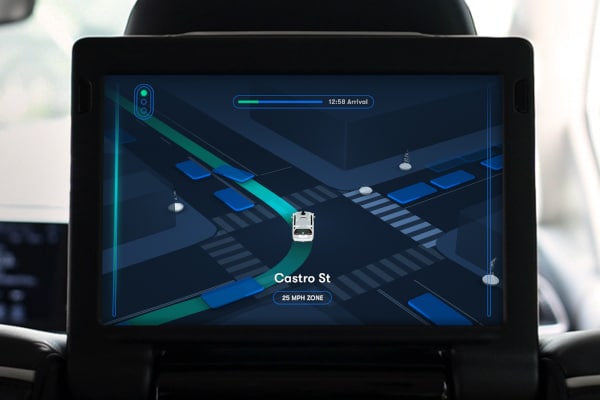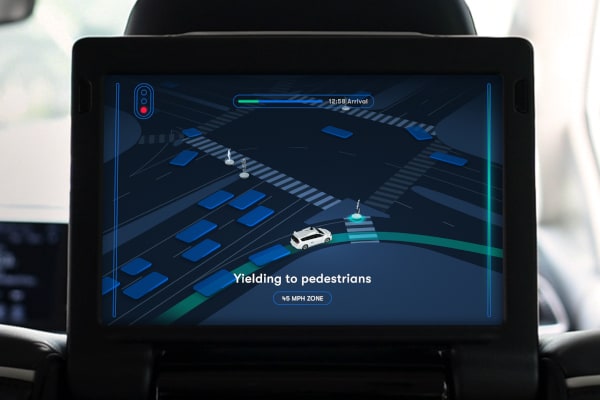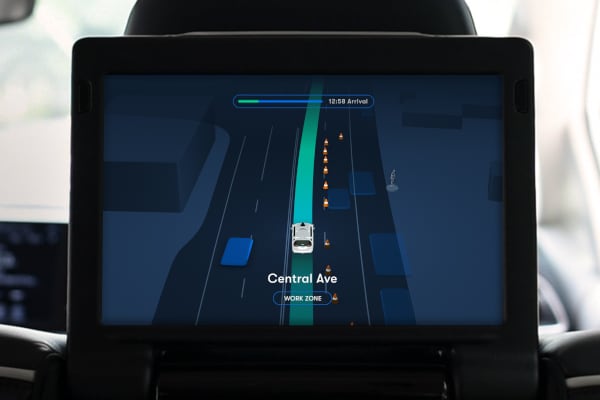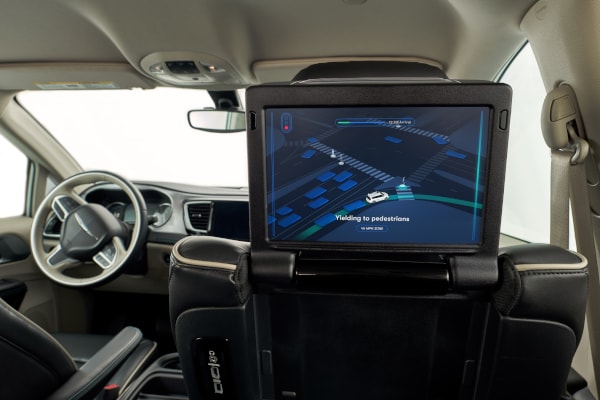In a scene reminiscent of the classic 1971 musical fantasy film Willy Wonka & the Chocolate Factory, a beaming John Krafcik greets a few dozen hand-picked journalists who have been corralled into a massive aircraft hangar at secret location in California’s Central Valley. The ex-CEO of Hyundai is now CEO at Waymo — formerly Google’s self-driving vehicle project — and he’s giddy about the opportunity to finally allow the media to peer behind the curtain at what his team has been working on for years.
Yet before we can peruse the fenced 91-acre test facility, which Waymo calls Castle (actually decommissioned Castle Air Force Base near Atwater, Calif.), a bit of compulsory education is due — we patiently sit through several brief presentations, led by some of the brightest technology talent in the industry, as each explains the company’s objectives, challenges, and successes.
Waymo, a division of Google parent Alphabet, is tasked with making roads safer and improving mobility for those who cannot drive. Like most of the dozens of companies pursuing comparable objectives, Waymo began by designing and testing hands-free autonomous systems that the industry terms “Level 2” and “Level 3,” which still require drivers to retake control at a moment’s notice. However, when Waymo videoed its test drivers putting on make-up, texting, and even napping behind the wheel — essentially becoming more of a hazard than if they had been actively driving — the company quickly pulled the plug on the program.
As Krafcik explains, it was time for Waymo to make the jump directly to “Level 4” — self-driving technology that doesn’t rely on human interaction, or more specifically, become a casualty of human error. It is also crucial to transition vehicle operators mentally from being the driver to their new role as a passenger. The vehicle is no longer an inanimate object — it is now a trusted chauffeur.
Eliminating human error
The National Safety Council says that nearly 40,000 people died on U.S. roads last year and another 4.6 million were injured. Waymo’s estimates are that 94 percent of those crashes were due to humans making mistakes. To save lives and reduce injuries the company had to set its sights on Level 4 autonomy, but it wouldn’t be easy. Waymo would have to develop sensors, software, and a vehicle that could operate without a human driver.
Rather than grab off-the-shelf technology, Waymo engineered its own specifications for high-resolution sensors—radars, lasers, and cameras—and then built them itself (as a result, it’s long-range laser is powerful enough to see an object 900 feet away). Its engineers wrote their own software to allow the sensors to understand and classify the objects in the surrounding environment. The better the understanding and the comprehension, the more successful the software is able to handle complex situations (e.g., a man standing next to a vehicle broken-down in the roadway).
Lastly, Waymo needed to find a state-of-the-art vehicle to serve as a platform. The completely-redesigned 2017 Chrysler Pacifica Hybrid minivan, with a fuel-efficient powertrain, innovative electronic controls, and superior crash test scores, was chosen. Waymo and FCA collaborated in late 2016 to begin building 100 test vehicles with Level 4 technology (as of today, the company has hundreds more on order).
Meet the Waymo self-driving vehicle
Appearing as if the offspring between a Chrysler Pacifica minivan and an Apache attack helicopter, a stark white and sensor-laden Waymo self-driving minivan glides around the corner and stops a few feet away. There’s a momentary pause while we check out the whirling LIDAR sensors and enormous glass-domed camera on top, but then the power-operated side door opens, and we climb in.
The cabin of the Pacifica Hybrid appears mostly stock. The dashboard and all traditional switchgear and controls have been left intact, but there is no driver or front passenger to operate them. Swallowing that peculiarity is made easier by two large flat-panel displays, mounted behind each of the front seat head restraints. Mirroring each other, the two show an interpretation of what the vehicle’s sensors are looking at, letting passengers know what the vehicle “sees.”
But it’s not that simple, as Waymo engineers explain. The multitude of sensors on the minivan are observing, and continuously processing, millions (billions?) of bits of data, an amount that would overwhelm the human brain. Special software interprets this data and presents it in a human-friendly format on the screen. Passengers see the road, other vehicles, pedestrians, and more as colored symbols. Even traffic cones, which are a crucial part of the equation, show up. The surrounding buildings, which are being scanned by the vehicle’s sensors, ghost in and out of the picture as needed. The resulting display is easy on the eyes and effortless for passengers to comprehend. It works fascinatingly well.
Don’t touch that steering wheel
Mounted high on the interior roof, where a dome light was traditionally located, is a rectangular panel angled towards those in the second row. There are four quarter-sized buttons on the display. The first three (“Help,” “Lock/Unlock,” and “Pull Over”) are black, the fourth, in blue, is labeled “Start Ride.” Braille dots are located above each, for visually impaired riders.
The buttons are self-explanatory, and they serve a dual purpose. Not only do they allow the rider to operate the vehicle, but they serve as emotional support buttons as humans like to be able to call for help, unlock the doors, and have the vehicle pull over. Consider them peace of mind.
After summoning the vehicle with a smart phone app, operation of the Waymo self-driving vehicle is as simple as pressing buttons (we suppose you can teach a three-year-old to enter the van and press the blue button, assuming they could strap themselves safely in place). The human controls still work, but passengers aren’t supposed to touch them—there’s really no need for them, anyway.
Look ma, no hands… and no worries!
With the press of the “Start Ride” button, the Waymo self-driving minivan begins its journey. The team at the Castle facility had pre-programmed a meandering route through its test facility that included several obstacles—random hazards that were different on each loop. These included stop lights, bicyclists, pedestrians, broken down vehicles, and other vehicles. Anticipating the potential peril ahead, we cinched our seat belt tighter.
We gazed at the monitor screen for about the first 30 seconds, waiting for the minivan to go wide in a corner, hit a curb, or roll through a stop sign. But it didn’t. Instead, it cruised effortlessly and smoothly around turns, missed every curb by several feet, and stopped perfectly at a three-way intersection. The van even crept up several inches, just like a human would, to get a better view of the oncoming traffic in a blind corner.
A pedestrian walked off the curb in front of us. Our van slowed and stopped. Another Waymo van crossed in front of us. Our van waited. We cruised casually through the make-believe cityscape and enjoyed the scenery. It took about a minute to completely trust the self-driving minivan. That’s all, because it drove better than most of our peers. Later, we watched as Waymo employees threw boxes in front of the moving minivan, while another cut it off in a zippy Honda S2000. The van reacted faultlessly, with purposeful braking and controlled steering.
Redundancy, redundancy, and redundancy
Commercial jet travel is safe because modern airliners are equipped with multiple back-up systems in the event of an unexpected failure. In similar manner, Waymo self-driving vehicles are equipped with duplicate computers (the second computer immediately takes over if the first fails), duplicate electrical systems, and backup steering and braking systems. In the event of a hardware failure, the Level 4 vehicle can pull to the shoulder of the road and bring the vehicle to a safe stop.
More important than hardware redundancy, however, is Waymo’s Safety by Design software philosophy. This states that the company rigorously tests everything—ad nauseum. At the Castle facility, the teams run more than 20,000 structured closed course tests. Computer simulations have upwards of 25,000 virtual self-driving vehicles driving up to 10 million miles per day, and a fleet of self-driving cars is physically covering more than 10,000 miles each day. Every mile is analyzed, processed, and diagnosed. The software learns how to handle complex situations and social nuances of the road (e.g., who gets the right-of-way at a four-way stop sign when both vehicles arrive simultaneously).
Where do we go from here?
At one point, Krafcik asked the assembled journalists if they had any questions. Nearly every hand in the room shot up. It was obvious that the visiting media was impressed, but it was equally perplexed. Self-driving cars are intriguing because they are terribly complex. We are asking a mechanized computer to not only follow the road (the relatively easy part of the equation), but to make decisions on the fly. Humans process an immeasurable amount of information while driving, and we learn how to become better drivers with every mile based on our experience. How will consumers learn to trust a self-driving vehicle?
Krafcik explained that the solution is testing—the raison d’être for Castle. In this environment, Waymo’s fleet of Level 4 self-driving vehicles can run extreme simulations day and night. Every mile is recorded, and every mile is educational. Unlike humans, which are unable to mentally share their learned driving experience among peers, data from all the Waymo vans and computer simulations is communal and the learning is accelerated exponentially.
Waymo has been testing its vehicles on public roads in four key cities west of the Mississippi, and it plans to expand to other regions with more inclement weather soon. While the company won’t disclose any official launch dates for inviting the public into one of its self-driving Chrysler Pacifica Hybrid vans, partnering with companies like FCA, Avis, and Lyft proves its conviction.
With a firm handshake, Krafcik thanks us for coming. We note that he’s wearing a Wonka-like grin, as if he’s bursting to tell us more. After visiting Castle, and riding in a Waymo Level 4 self-driving vehicle, that moment appears nearer than many expect.
